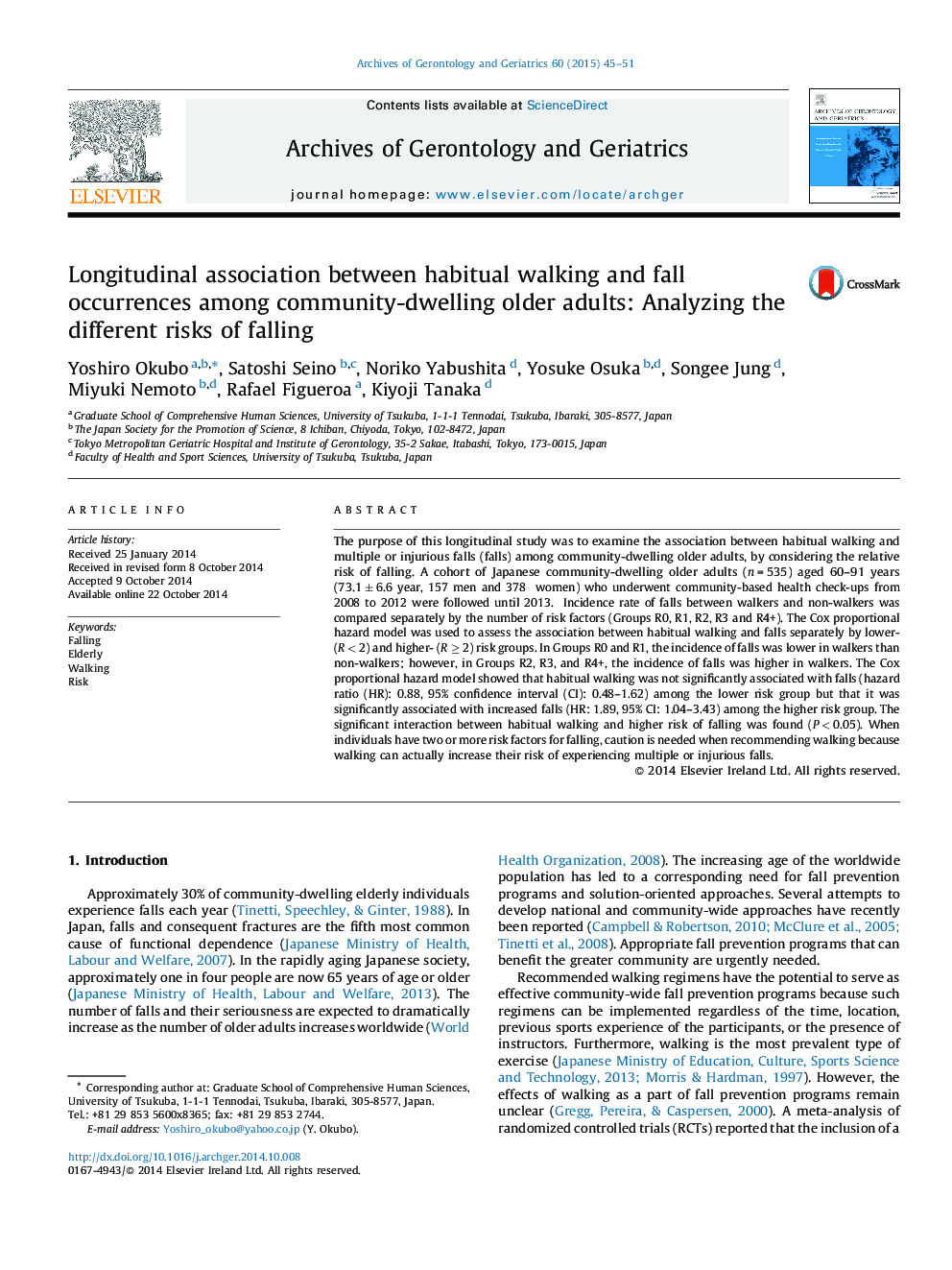| کد مقاله | کد نشریه | سال انتشار | مقاله انگلیسی | نسخه تمام متن |
|---|---|---|---|---|
| 1902759 | 1534433 | 2015 | 7 صفحه PDF | دانلود رایگان |
• The effect of walking on multiple or injurious falls is modified by the presence of risk factors for falling.
• When individuals have two or more risk factors for falling, habitual walking increases individuals’ risk of multiple or injurious falls.
• Safe walking programs for higher-risk community-dwelling older adults are needed.
• Habitual walking among lower-risk community-dwelling older adults does not increase individual's risk of falls and may have positive effects on falls prevention in a long term.
The purpose of this longitudinal study was to examine the association between habitual walking and multiple or injurious falls (falls) among community-dwelling older adults, by considering the relative risk of falling. A cohort of Japanese community-dwelling older adults (n = 535) aged 60–91 years (73.1 ± 6.6 year, 157 men and 378 women) who underwent community-based health check-ups from 2008 to 2012 were followed until 2013. Incidence rate of falls between walkers and non-walkers was compared separately by the number of risk factors (Groups R0, R1, R2, R3 and R4+). The Cox proportional hazard model was used to assess the association between habitual walking and falls separately by lower- (R < 2) and higher- (R ≥ 2) risk groups. In Groups R0 and R1, the incidence of falls was lower in walkers than non-walkers; however, in Groups R2, R3, and R4+, the incidence of falls was higher in walkers. The Cox proportional hazard model showed that habitual walking was not significantly associated with falls (hazard ratio (HR): 0.88, 95% confidence interval (CI): 0.48–1.62) among the lower risk group but that it was significantly associated with increased falls (HR: 1.89, 95% CI: 1.04–3.43) among the higher risk group. The significant interaction between habitual walking and higher risk of falling was found (P < 0.05). When individuals have two or more risk factors for falling, caution is needed when recommending walking because walking can actually increase their risk of experiencing multiple or injurious falls.
Journal: Archives of Gerontology and Geriatrics - Volume 60, Issue 1, January–February 2015, Pages 45–51
